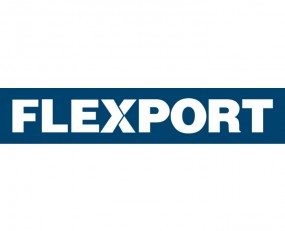
A group of investors have just given a small US forwarder $65m for doing what forwarders usually do and have always done – Why?
It might have come to the attention of some readers that a 3 year old company called Flexport has just completed a series B investment round of US$65m. This brings the total the company has raised so far to just over $90m US dollars. Which is interesting, not just because of the amounts of money involved, but because of who they are. In essence they are a technology company that has a freight forwarding and customs broking operation as a means to exploit their technology.
They developed a technology platform for monitoring and managing shipments and then employed experienced freight forwarders and customs brokers in a few offices across the globe, to manage shipments on behalf of their clients.
Like many companies, they are using their technology platform to drive the operations, while also providing clients visibility into their inventory and shipments through a combination of the software platform and applications. None of which is particularly unique or innovative, however the way they have executed this business model has obviously impressed investors, along with their growing client base.
This should be a wake-up call to many established forwarding and logistics operators. They must appreciate that huge amounts of money are now available to new companies moving into the industry. These new entrants ignore existing conventions, leveraging modern technology and industry expertise to move much faster and at much lower cost than incumbent players, as they are not burdened with outdated legacy technology platforms.
So why has this opportunity not being exploited before?
Actually it has, by many companies over the past 20 years or so, or at least since the World Wide Web illustrated how the Internet could be used to capture and share information at very low cost across the globe. The reason many of these companies struggled to succeed has nothing to do with innovation or lack of capital – both were available. It was a combination of circumstances including unrealistic expectations of the technology, inflexible and poorly designed incumbent technology platforms, lack of critical industry knowledge and an unreceptive and cynical potential customer base. Established industries, especially those grounded in custom and practice going back centuries, seldom welcome disruptive new ideas if they challenge prevailing business models.
Flexport’s application platform not only makes it very easy for shippers to get quotes and manage shipments, they also provide visibility into key steps of the movement. This is not rocket science and there are many applications that have already been developed by other companies that can do the same things to a greater or lessor extent. What Flexport has done is to combine technology with humans who know how to exploit that technology to provide a superior customer service and by so doing, show how things can be different and much, much easier.
Usually, logistics technology vendors focus on developing solutions that are flexible enough to be used by a wide variety of customers, be they 3PL’s, transport operators, carriers, or freight forwarders. They then use the platforms to support their existing operations. These solutions are often phenomenally functional with a huge range of configurable options, resulting in the clients spending a great deal of time integrating the technology while trying to service their customers. As a result, the introduction of a new operational system can take many months, or sometimes years.
Technology and especially new applications that live in “The Cloud” are not constrained by many of these challenges. But companies who wish to use them need to appreciate that they present an opportunity to ignore existing operational processes. In many cases these may be processes that were designed around inflexible internal solutions, implemented years ago and deemed too expensive to change or scrap. This is where companies like Flexport can thrive. Their existing operational models may not yet be able to address many of the more complex scenarios used by global supply chains, and their visibility solutions may not be sufficiently granular to support many of the more interesting opportunities that exist, but they are getting there.
They represent a new breed of innovators that use a smart combination of technology and people with established operational experience, to make many small steps much at a fast pace until they have the necessary scale to dominate.
Incumbents need to take note but not despair, as it is possible that ‘some elephants can dance’. There have been some outstanding illustrations of this in the past, but it does require a particular mindset and courage at senior management level.
Source: Transport Intelligence, September 28, 2016
Author: Ken Lyon